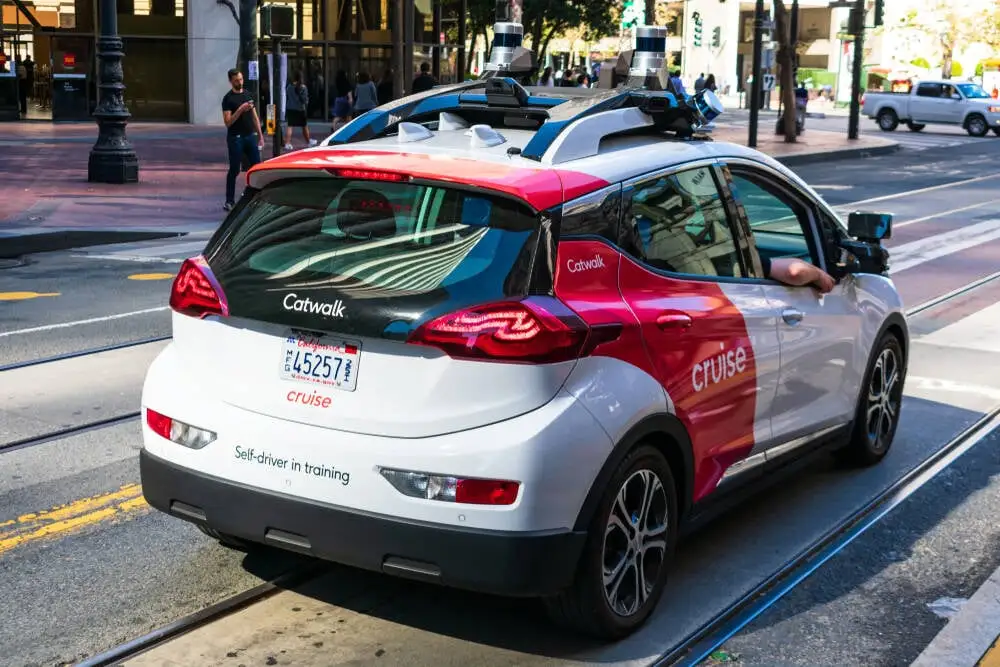Human knocks down woman in hit-and-run. Then driverless Cruise car parks on top of her, Victim in critical condition
Human knocks down woman in hit-and-run. Then driverless Cruise car parks on top of her, Victim in critical condition

Driverless Cruise car runs over woman hit by another driver

There are some questions but "should cars start moving while a person is still on the crosswalk?" is surely not one of them.
A person laying on the ground in a crosswalk was likely never considered by the team to include in their training data. Those outlier situations are exactly what real world data is needed for. And the only way to properly train for most of these situations is to drive in the real world. The real world isn't perfect situations and nice lines on fresh asphalt so while base training in perfect situations is useful, it will still miss the exact same situation in a real world environment with crappy infrastructure.
Not sure what or how Cruise uses the data collected in real-time, but I can see camera visuals categorizing a person laying in the crosswalk as something like damage to painted lines, and small debris that can be ignored. Other sensors like radar and lidar might have categorized returns as something like echoes or false results that could be ignored, again because a person laying in the crosswalk is extremely unlikely. False data returns happen all the time with things like radar and lidar, millions of data points are ignored as outliers or info that can be safely ignored, and sometimes that categorization is incorrect.
Well if you know you need backup with edge cases, why isnt there a human in the car with controls?
I didn't bother reading any further than this. The person was on the crosswalk when both cars started moving. Neither car should have been moving while anyone was still on the crosswalk.
I actually work at one of these AV companies. We definitely have training data on adults and children laying down. I'd be very very very surprised if Cruise doesn't due to all the people laying down on the sidewalks in SF. In addition, the clarity of the lidar/camera data on objects on the road is very clear. You can see the dips and potholes in the road as well as specifically see the raises of the painted lines. There's no way they weren't tracking the person.
I could see predictions on the pedestrian saying the coast is clear. Once the initial crash happens, there likely isn't enough room to stop in time even with a max break.
A different question I have is whether or not the cars have transponders or other communication devices to automatically call emergency services in case of accidents. I'm assuming not because they would probably have a lot of junk calls and I doubt the company would have spent the time to create an algorithm for when to call 911 if they didn't create an algorithm for what to do if there's a pedestrian in a crosswalk.
That's one of the big downsides of these driverless cars: if a human accidentally ran over the victim, they have the capability to get out of the car to assess the situation, call 911, and offer aid to the victim. An empty car can only ever just sit there with its hazard lights on and maybe call for emergency services.
The auto-driving company should be required to have something like an on-star operator available any time the vehicle receives an impact/shock above a certain threshold and any time physical safety measures are required. The local governments should not have to pay for the externalities created by these 'disruptive technology' jerks, especially when there are literal lives on the line.
Without knowing what type of vehicle the first car was, it's hard to say how this played out. If it was a van or truck or something else that could've easily obstructed Cruise's LIDAR system or if the other vehicle stopped ahead of the crosswalk line, the SDC would've had little to no way of knowing that there was anybody in the crosswalk.
Can't know for sure unless Cruise releases the video to the public, which they're unlikely to do until the police do their investigation.
If your vision of the crosswalk is obstructed, you don't proceed through until it's unobstructed. That's true whether it's radar, lidar, or vision. Truck in the way? Pull up as far as you can safely see, then look and proceed if clear.